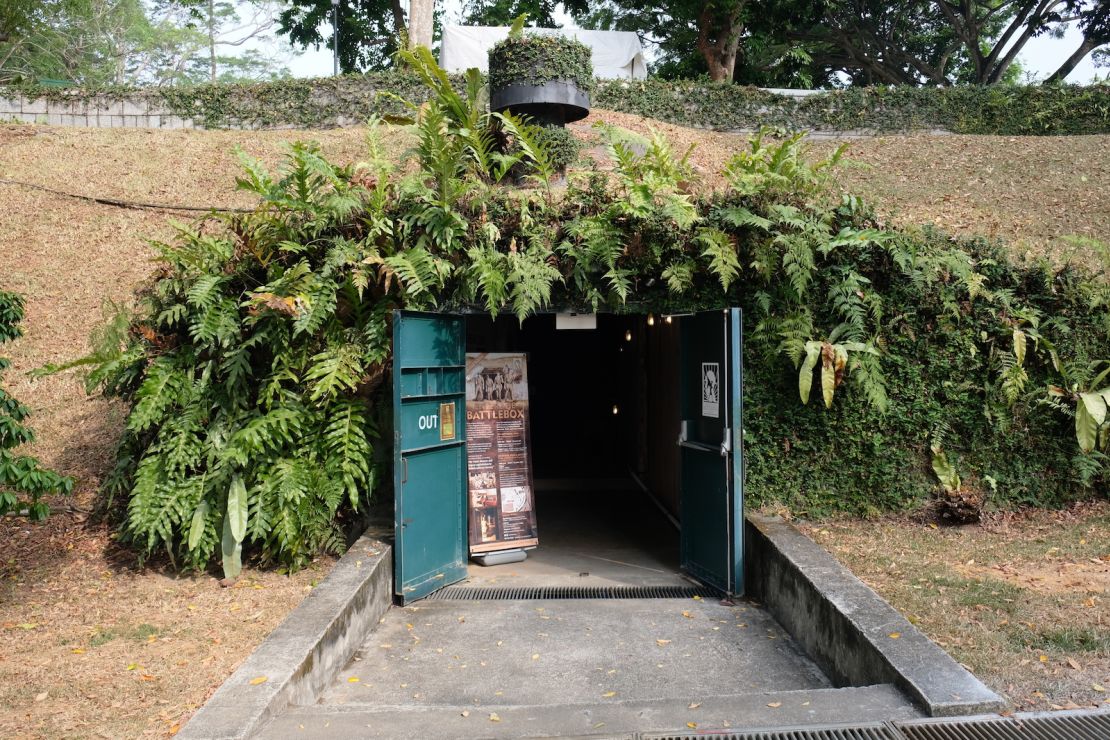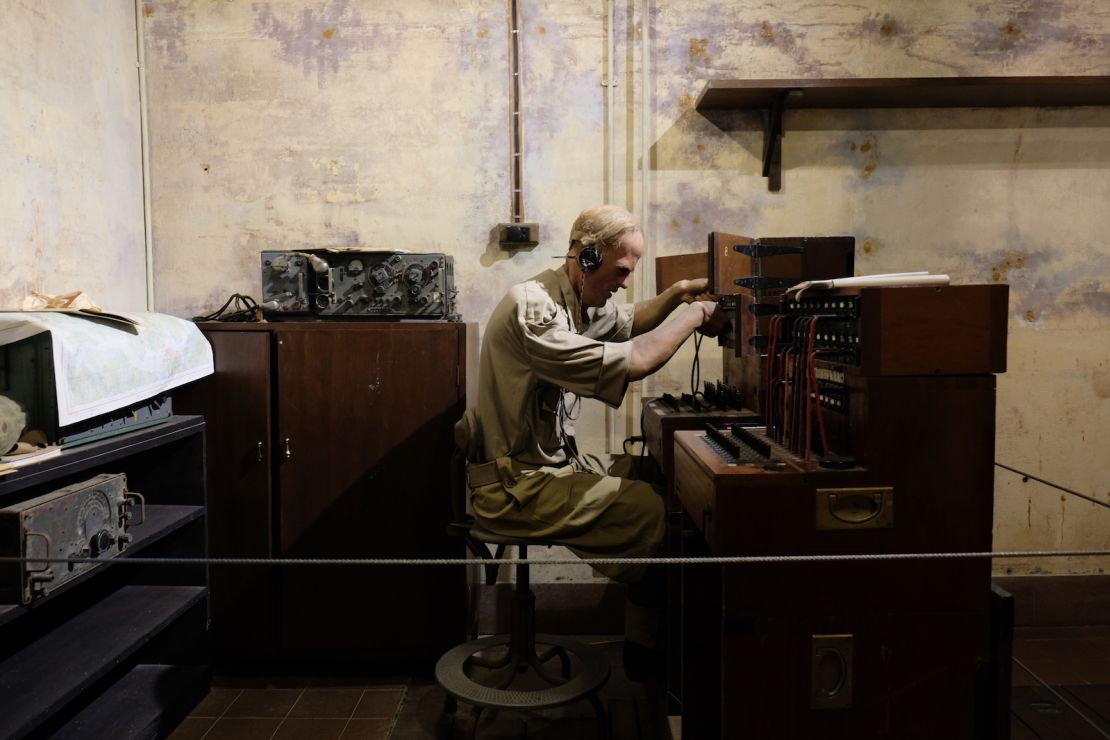Inside the dimly lit underground bunker, 12 military commanders are about to trigger the largest capitulation in British military history.
At 9:45 a.m. on February 15, 1942, Lt. Gen. Arthur Percival and 11 other senior officers agreed to surrender the British Empire’s forces, numbering more than 120,000 in Malaysia and Singapore, to the Japanese, whose troops numbered under half that.
They made that decision from within “the Battlebox,” a secret and heavily fortified underground military bunker that’s been turned into a museum at Fort Canning Hill in Singapore.
After 70 days of brutal jungle warfare, Percival’s crew was short on ammunition, food and water.
“The primary defense of the British Empire rested on the defense of Singapore. From there, Britain could span her entire empire in Asia,” explains Battlebox director Jeya Ayadurai. But surrender soon became the only option.
Percival’s decision would not just open the darkest chapter in Singapore’s modern history – it also sparked the unraveling of the British Empire.
Today, the city-state has established itself on the international stage as a vibrant cultural and financial hub.
And as Singapore celebrates its bicentennial in 2019, changing the debate around the commemoration of the past has become important as the nation looks ahead to its future, according to Ayadurai.
“There are a lot of myths regarding the Battle of Singapore, and we felt that [the reasons] why Singapore fell had to be more readily explained and understood. We wanted to bring focus in terms of modern Singapore looking forward,” he adds.
A forgotten bunker
The British began preparing for war the moment the Japanese invaded China in 1937.
“The Battlebox” refers to Fort Canning Bunker, which was constructed in 1938 to serve as a highly secret, bomb-proof command center under Fort Canning Hill. That command center became a hub of British espionage and high-level decision making during the Malayan campaign and the Battle of Singapore as British commanders became wary of Japanese advances in the region.
But Japan’s victory was sealed in December 1941 when its forces decided to attack Singapore from Malaysia and not the sea on the same day they launched their attack on Pearl Harbor.
While Percival and his team prepared for the Japanese to attack Singapore’s northeast, the Japanese forces came in from northwest, where the British had few defenses.
The Battle of Singapore, which is also known as the Fall of Singapore, was fought from February 8 to 15, 1942. The Japanese military took over the Battlebox following Singapore’s surrender.
After the end of World War II, the bunker lay forgotten for many decades. Overgrown shrubbery hid its entrance.
The site was only rediscovered in the 1980s, when a journalist chanced upon it and wrote an article on its significance for Singapore’s Straits Times newspaper.
Reliving the past
The site re-opened as a museum in 1997 on the 55th anniversary of the surrender of Singapore and was recently revamped by the Singapore History Consultants, which has been managing it since 2013.

Its role is to tell two pivotal stories – that of the fall of Malaya and Singapore in WWII, and how an underground command center functioned during the war.
In doing so, Ayadurai hopes to offer a “window into a world that most civilians do not have an idea of.”
From deep within the bunker, waxwork soldiers stand guard in corridors, giving a ghostly vibe. Guides take visitors through the winding underground warren, where rooms such as the Plotting Room, the Cipher Office and the Surrender Conference room have been remodeled to reflect exactly how things would have appeared in the 1940s.
In the Cipher Office, old equipment and notes lay strewn on desks; Japanese characters denoting key British personnel are scrawled on the walls. They have been preserved behind clear glass. Midway through the tour, the museum docent divulges an anecdote on how the toilets used by personnel became blocked in the lead up to Singapore’s surrender, exacerbating conditions for those commandeering British forces.
The challenges of living within a dark, dank bunker during WWII are palpable.
Creating a culture of remembrance
As Singapore focused on growth, the idea of commemorating the past was overlooked, says Ayadurai.
“We became a first world country in haste, and we were able to do that because we were very focused on the economy, but there was not much focus on remembrance,” he says.

The raison d’etre for the Battlebox arose from a desire, he says, to understand the complexity of war and bring about a constructive dialogue on painful past events. While none of the facts of war are glossed over, Ayadurai states that the Battlebox aims to leverage the act of commemoration to build a better future.
“We have an obligation to those who have lived through the war, and those who were in uniform during the war,” says Ayadurai. “We do not want to glorify war, but to recognize it as a sacrifice and where possible to improve international relations and create a more conducive environment for peace.”
In the coming years, the Battlebox aims to install new galleries focused on the post-war years, and on how Singapore forged a path to independence on August 9, 1965. But for now, Ayadurai wants the frozen figures and artifacts within the museum to open up perceptions on warfare.
“When you leave (the Battlebox) your perspective of war and your understanding of its complexity and what these men went through will change. There’s an appreciation on the human level of what took place.”
The Battlebox, 2 Cox Terrace, Singapore 179622 +65 6338 6133




